Genetic Optimization (9.0)
Context
Analysis | Target Optimization | Genetic
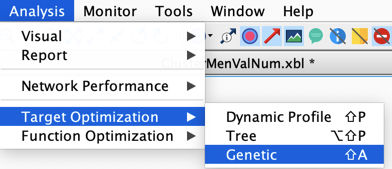
This feature is a search algorithm based on a genetic algorithm that can be used to find sets of evidence (Hard Evidence and/or Numerical Evidence) that optimize:
- the probability of the target state,
- the mean value of the target node.
Instead of just maximizing or minimizing one of these two criteria, it is also possible to directly specify a target value.
The Genetic Optimization of the Function nodes (opens in a new tab) has been updated in exactly the same way.
History
Genetic Optimization (opens in a new tab) was entirely redesigned in version 5.2 (opens in a new tab) and then updated in versions 5.3 (opens in a new tab) ,6.0 (opens in a new tab), and 7.0 (opens in a new tab).
New Feature: Allow No Evidence
As of version 9.0, the genetic algorithm can create solutions without instantiating all the nodes that are included in the optimization, i.e. all the (selected) observable nodes.
New Feature: Filter
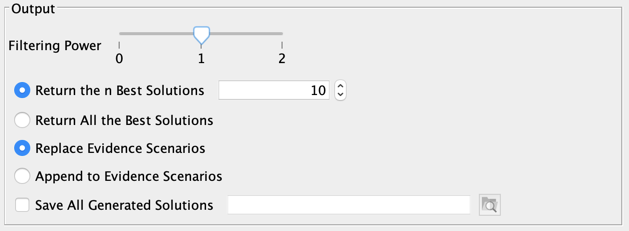
There is now a filter that can be used to remove solutions from the output (Report and Evidence Scenario File):
- Filtering Power:
- 0: All solutions are reported,
- 1: The Strongly Dominated solutions are excluded from the report. Hs is strongly dominated by Hd, a dominant solution when Hs ⊃ Hd and Score(Hd) ≥ Score(Hs),
- 2: The Strongly and Weakly Dominated solutions are excluded from the report. Hw is weakly dominated by Hd when Hw ⊂ Hd and Score(Hd) > Score(Hw).
New Features: Additional Metrics in the Target State Optimization Report
As of version 9.0, the report describing the optimization solutions comes with several new and renamed metrics:
- Posterior Probability has been renamed Posterior Probability P(s|E), where s stands for the state to be optimized,
- Joint Probability has been renamed Marginal Likelihood P(E), where E represents the current set of evidence,
- Likelihood P(E|s),
- Bayes Factor BF(s,E): P(s|E)/P(s),
- Generalized Bayes Factor GBF(s, E)
- Size indicates the number of observations in the current set of evidence.
New Features: Additional Metrics in the Target Mean Optimization Report
The report describing the optimization solutions of the Mean Value also comes with new and renamed metrics:
- Credible Interval,
- Joint Probability has been renamed Marginal Likelihood P(E), where E represents the current set of evidence,
- Size indicates the number of observations in the current set of evidence.
As of version 9.0, the Confidence Level can now be modified via the Preferences
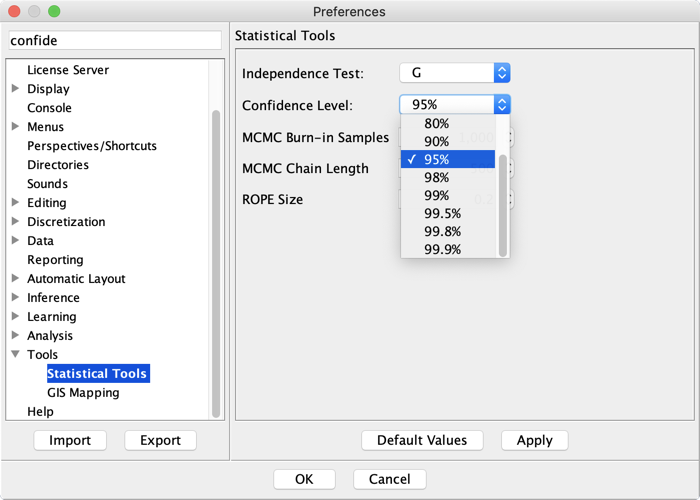
Updated Features: Return the Best Solutions
Prior to version 9.0, the best solutions that were returned were the solutions that had improved the current best score across all populations. Now, BayesiaLab returns the best solutions that have been generated during the optimization.
Example
Let's utilize the network we have used for describing Cluster Interpretation with (opens in a new tab) Most Relevant Explanations (MRE) (opens in a new tab). For the sake of simplifying the optimization reports, we exclude 6 nodes from the optimization by setting them Not Observable (opens in a new tab) (we can achieve the same result by selecting the first 6 nodes and running the optimization on the selected nodes only).
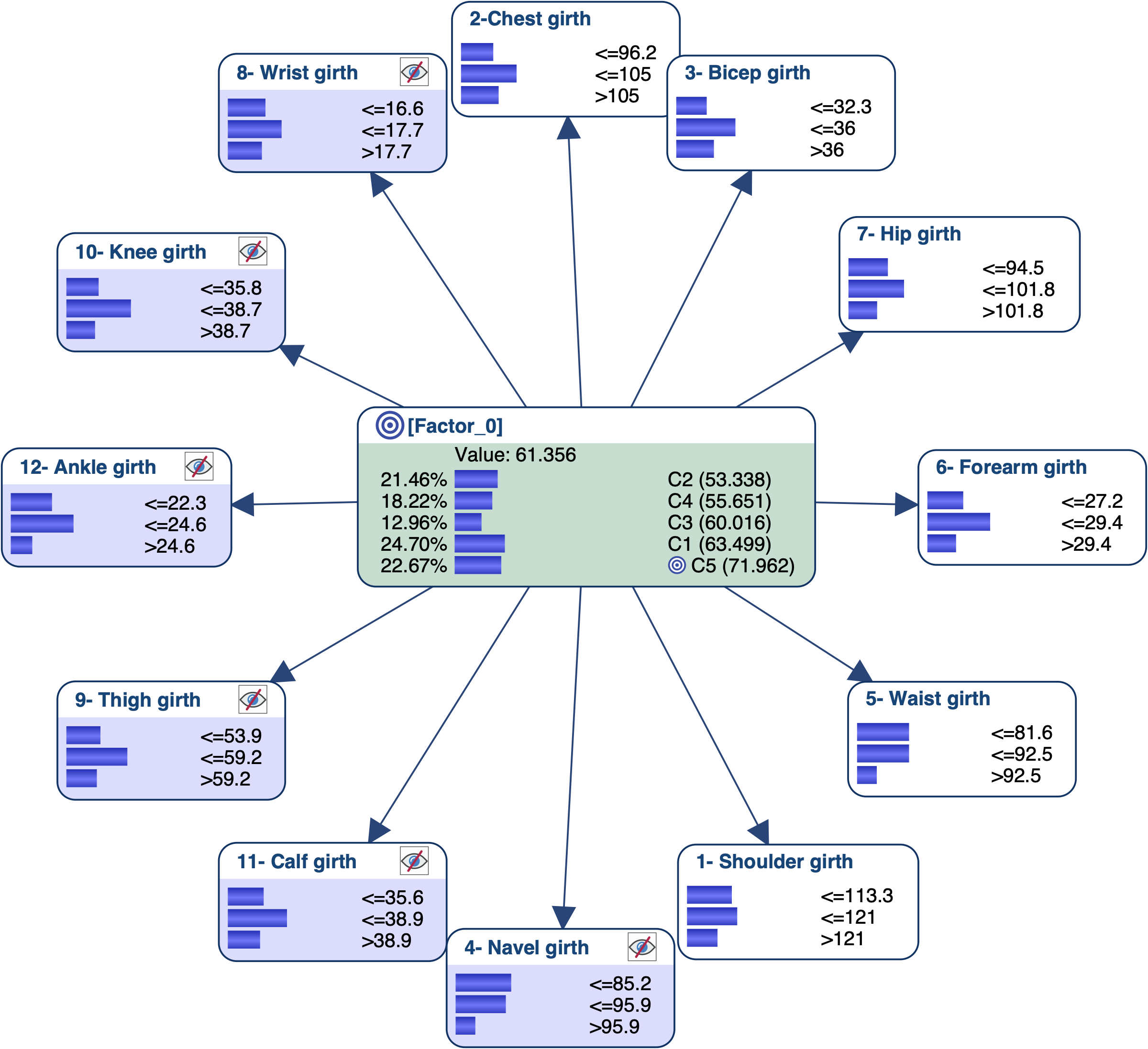
Below is the Mapping (Relationship with Target Node) that takes into account the costs. It represents the states of the Target nodes by taking into account 3 dimensions:
- the diameter of the circle is proportional to the a priori probability of the state
- the color deepness is proportional to the state purity
- the proximity between the states is based on the neighborhood
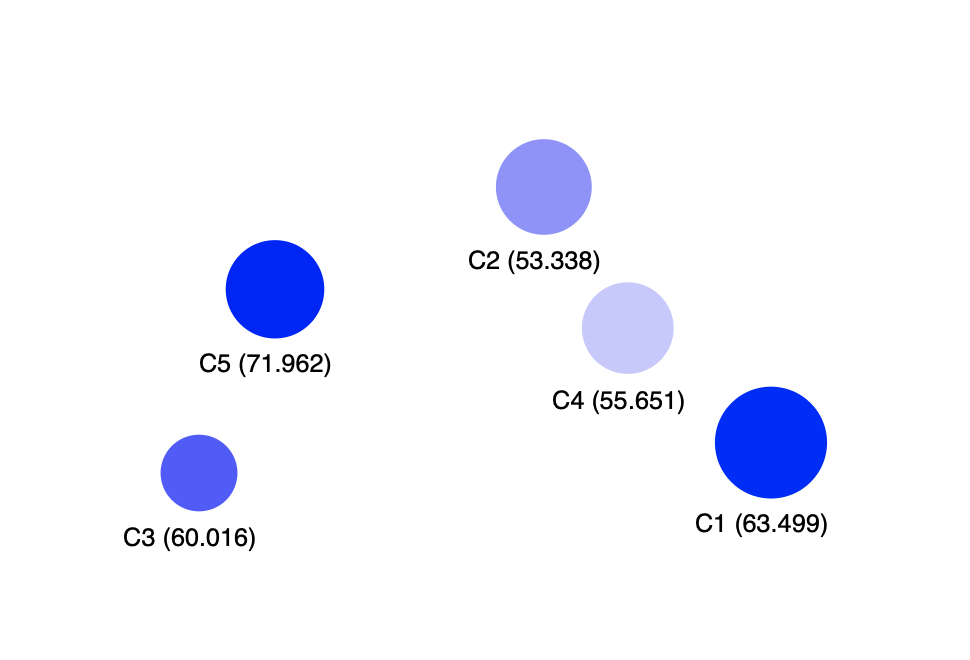
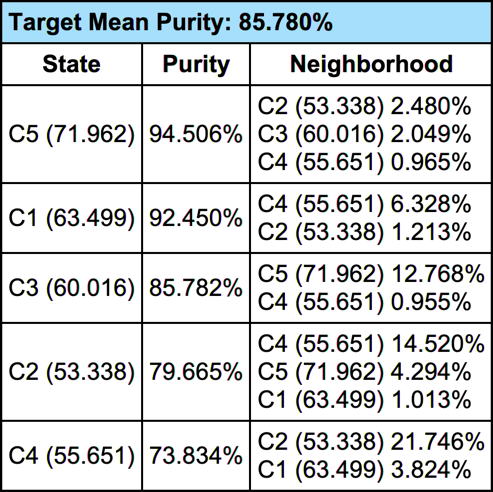
Suppose we use the following settings in order to find a subset of Hard Evidence (among the 6 nodes that can be used) that return a posterior probability of C5 = 50%.
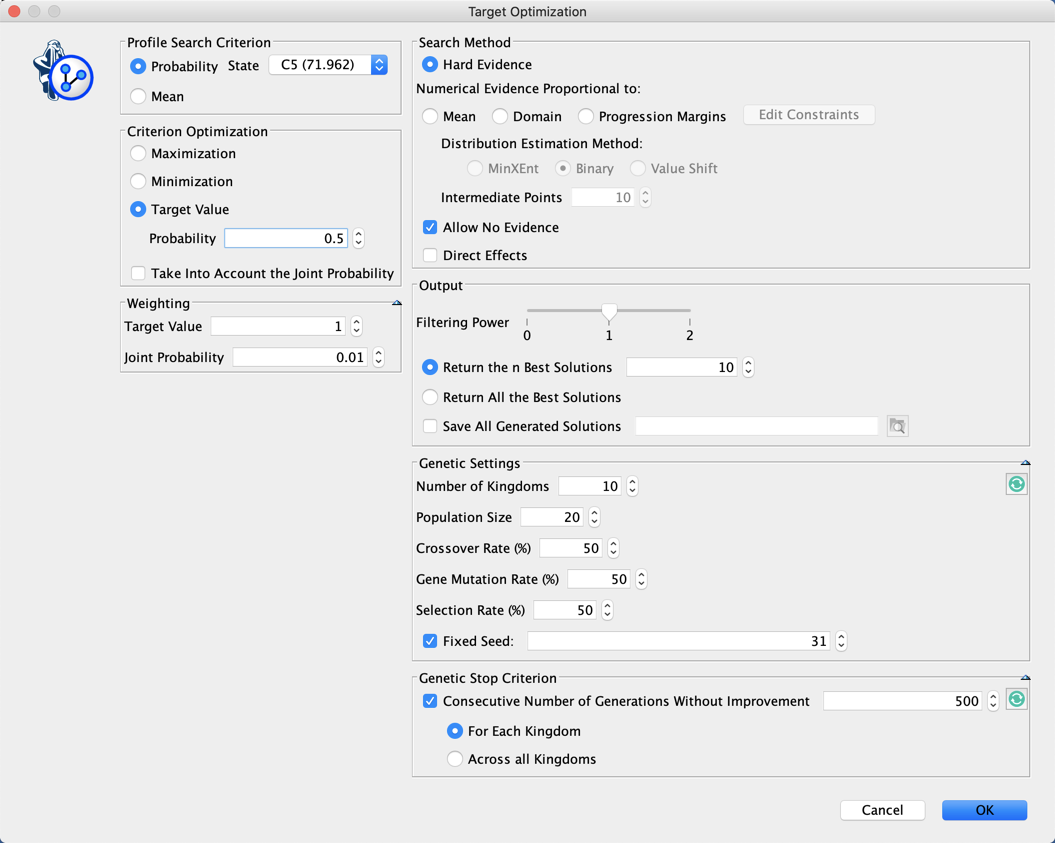
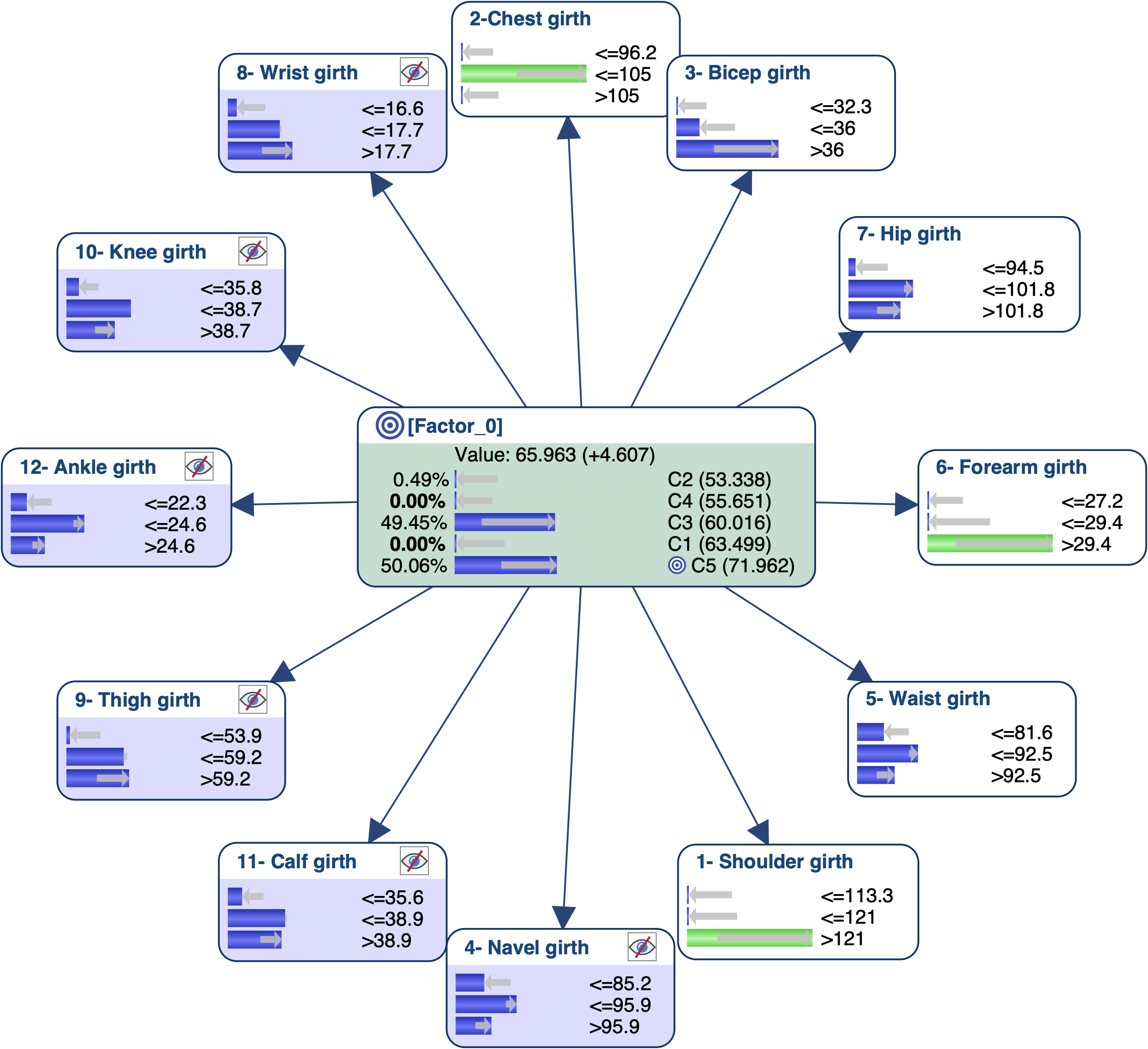
The best solution is made of only 3 Hard Evidence. It represents a subset of men that either belongs to C5 or C3.



